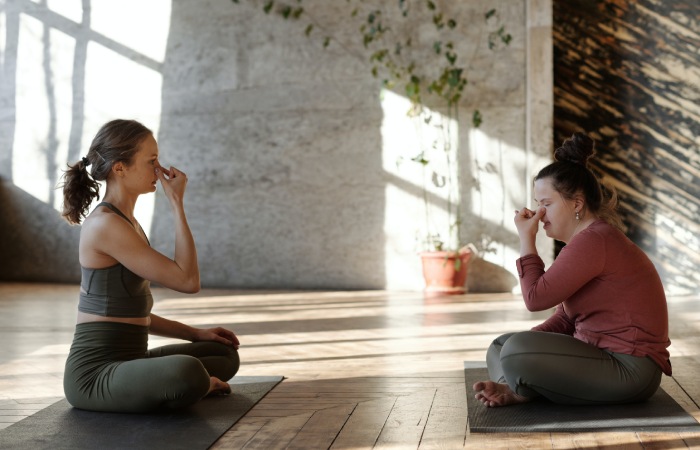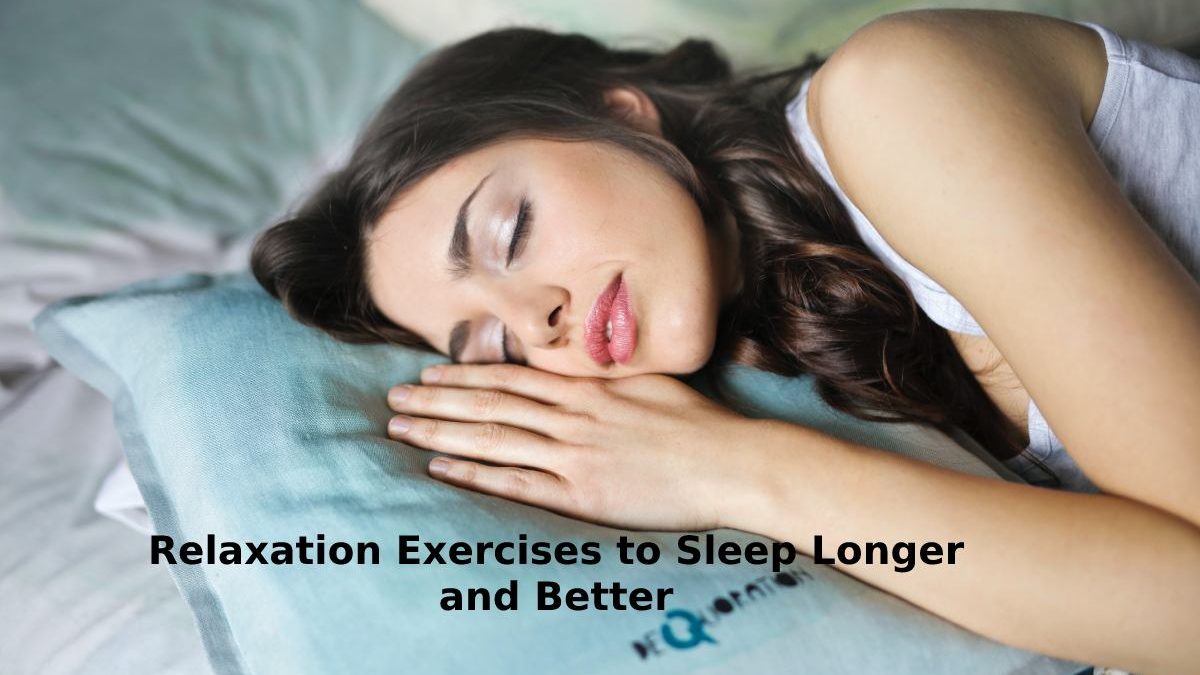Sleep is necessary for our physical and mental health. However, sometimes stress and anxiety take their toll on us, causing insomnia. Therefore, if you have trouble falling asleep and wake up in the middle of the night, it is convenient that you practice some relaxation exercises to sleep well.
Table of Contents
Some Effective Exercises to Relax and Sleep Better
Deep Breath

One of the most acceptable ways to reduce is to breathe. It is not about inhaling and exhaling repeatedly but about doing it correctly. We recommend that you sit on a chair with your feet firmly on the ground and with your back straight and stretched out, forming an angle of 90 degrees. You can also adopt the lotus position with your legs crossed, and remember to watch the part of your spine. Either one is valid. Relax your shoulders and neck, and close your eyes.
Breathe in through your nose, bringing air up to your diaphragm located just below your lungs. Then, hold your breath for three seconds earlier, exhaling through your mouth. Repeat this process a total of five times. With each breath, you take, relax more of the muscles in your face, jaw, hands, and hips.
The 4-7-8 Breathing Technique
This breathing technique was created by a professor at the University of Arizona. Sitting with a straight back against a wall or a wall, we inhale through the nose for four seconds, hold our breath for seven seconds and exhale for eight seconds.
They recommend doing this practice from a sitting position until we start to feel sleepy.
Reoriented Thinking
The moment we get into bed and close our eyes, the thoughts of the whole day with our worries, pending tasks and outstanding events begin to haunt our heads delaying and even preventing falling asleep. Hence the importance of reorienting our thinking with three questions: is the threat I feel real? Is it the product of my imagination? And what can I do now to stop feeling fear and uncertainty? Three answers will calm our ideas and help us sleep better and faster.
Hip Stretch
This technique is ideal for people who spend a lot of time sitting and can relax the body before going to sleep. We stand with our legs apart and one foot in front of the other to do this. The front knee remains bent while the back knee remains stretched and with the instep resting on the ground.
We keep our back straight and look up with our body as stretched as possible in this posture. Breathe deeply for a few seconds to one side and then to the other. Repeat each complete cycle five times.
Head and Face Massages
Spending hours in front of different screens can give us headaches at night and the next day. An excellent way to relax is to gently massage your head and face with your fingertips to avoid this.
The course is as follows: it starts from the forehead to the nape of the neck and continues in the part of the crown towards the ears. Next, apply light pressure to the forehead, around the eyes and between the eyebrows. Finally, circle your cheeks until you manage to release all the built-up tension, which will help you sleep better.
Tennis Ball Massage
You can also get rid of your worries with a tennis ball or a similar-sized ball. Stand up and place the ball between your back and the wall. Move it around your body and press on the areas where you feel the most pressure.
This workout can also be done lying in bed to release tension in the legs and hips. It may sound strange, but we assure you that it is one of the most effective techniques for falling asleep quickly and well.
Ten Minute Meditation
The First Thing We Should meditate on is to find a position in which we feel comfortable with our eyes closed. Next, we take six long, slow, deep breaths, focus our attention on a bright spot, and try to feel it.
This light unfolds from the top of the head through the spine and heart, down the arms and into the hands. At this point, focus your energy and thoughts on how and where you are, and try to reach a state of gratitude.
Hold Your Breath
Though sitting or lying down, close your eyes and breathe in and out three times. Feel the air flow gently and slowly through your nose and lungs until it reaches your stomach. Then exhale.
Then take a long, slow, deep breath. Pause and hold your breath for five seconds. Release and exhale with a long deep breath. Repeat this process between 10 and 15 times; it will help you sleep much better.
Avoid Technology
A common habit before going to sleep is to watch television, the computer or the telephone; however, this is counterproductive to falling asleep. The blue brightness produced by digital devices is mind-altering, so it’s best to avoid it before bed. The most sensible thing is to leave the electronic devices at least half an hour before sleeping to relax.
Conclusion
The best reflection of this anxiety is seen in sleep. During confinement, it is widespread for our rest schedules to be altered, and we develop insomnia or difficulties falling asleep. Establishing a fixed routine is therefore essential. Also, try to go to bed every day at the same time, as well as get up.
Also Read: What is TMJ? – Problems, Symptoms, Treatment, and More

